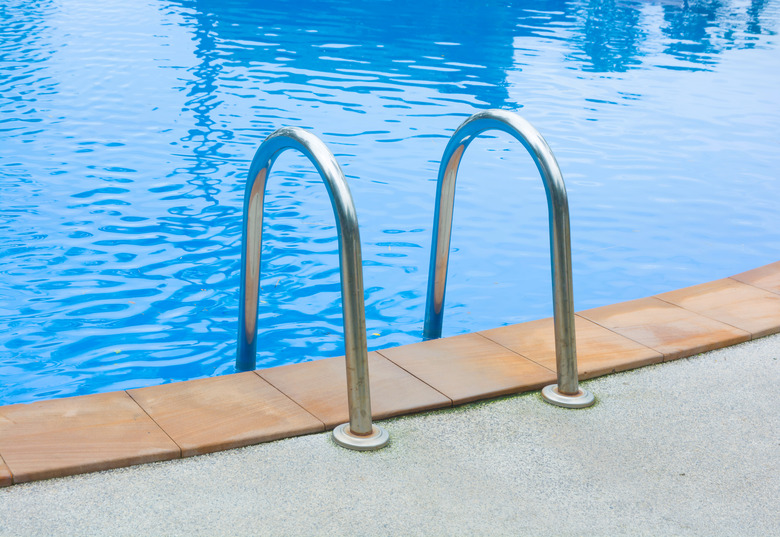How To Paint Pool Coping
We may receive a commission on purchases made from links.
Pool coping, or the top rail of a pool, can be made of a few different materials. The most common materials are PVC, aluminum, and steel. Some in-ground concrete pools can have precast coping stone, flagstone, or even brick. These types of stones can easily be pressure washed or lightly acid washed, bringing back their luster. PVC is not usually painted, but other materials will require a slightly different technique to restore an unsightly top rail.
Tip
Using spray paint will require a good amount of skill and prep work to keep the job looking neat while keeping the overspray to a minimum. Brush-method painting might be better for the average DIYer.
Aluminum Pool Coping
Aluminum Pool Coping
Coping made of aluminum can be easily painted using a paint that is designed specifically for this purpose. Any successful paint job requires good prep work before breaking out the paint.
- Clean the coping with a tile and vinyl cleaner. This type of cleaner will not affect the pool water. Another possible method would be to pressure wash the pool coping.
- Using a coarse, general-purpose nonmetallic scouring pad rated at about 300 to 400 grit, sand and scuff the pool coping. Sanding and scuffing the old paint increases bonding between the old and new paint. If you're more into power tools, then a flap wheel or ceramic disc might be more to your taste. Do not use any type of steel wool or wire brush. Metal can get into and along the liner, causing a rust stain or a leak.
- Protect surfaces from the "oops" factor by trimming the edges between the pool decking with tape and newspaper. If you are looking to protect the vinyl liner, be sure to use a mild tape that won't harm the liner. Don't worry if you get a little paint on the liner; it can be cleaned off with a textured sponge or nonaggressive cleaning pad.
- Using an aluminum primer or etching primer, apply two coats to any area where the aluminum is exposed and bare metal is showing. It is not necessary to prime or etch any areas where the metal is not bare.
- Finally, it's time to paint. With either a spray paint or a brush-on product, paint the coping. Use a paint that is specific to marine use or use a paint that is good for both aluminum and pools.
Steel Strip Coping
Steel Strip Coping
Steel can be a troublesome coping around a pool. Steel rusts very easily because of its iron content, and iron will rust, causing corrosion. This is a chemical reaction of iron, oxygen, and moisture. A pool with steel coping has all three. The good news is that it should only be surface rust because that is primarily where the oxygen is. Removing the rust and using an inhibitor, like naval jelly or any other rust inhibitor, will slow or stop the corrosion process. Sealing the steel from oxygen with a good rust-preventing paint will prolong the life of the steel. As with using any types of chemicals, be sure to read and understand the safety precautions and protect any surfaces you do not want to damage.
Precast Pool Coping
Precast Pool Coping
Concrete and vinyl pools can have precast plaster, flagstone, or brick coping. The prep work for these types of coping is to simply clean and degrease the coping. Be sure to read product labels and wear the appropriate personal protective equipment.
- Degrease the coping with a product like trisodium phosphate.
- Lightly acid wash to remove any unwanted mineral scale from the coping.
- Moisten the coping stones with plain water and pour the chemical over the moistened stones using a watering can.
- Liberally rinse the coping with a sufficient amount of water. Allow the coping to thoroughly dry for about two days.
- Cover the tile, water, and pool deck with painter's tape and plastic film.
- Paint coping with pool deck paint or sealer used specifically for this type of coping.
Tip
No matter what your situation, always remember that no job is complete until the cleanup is finished.
